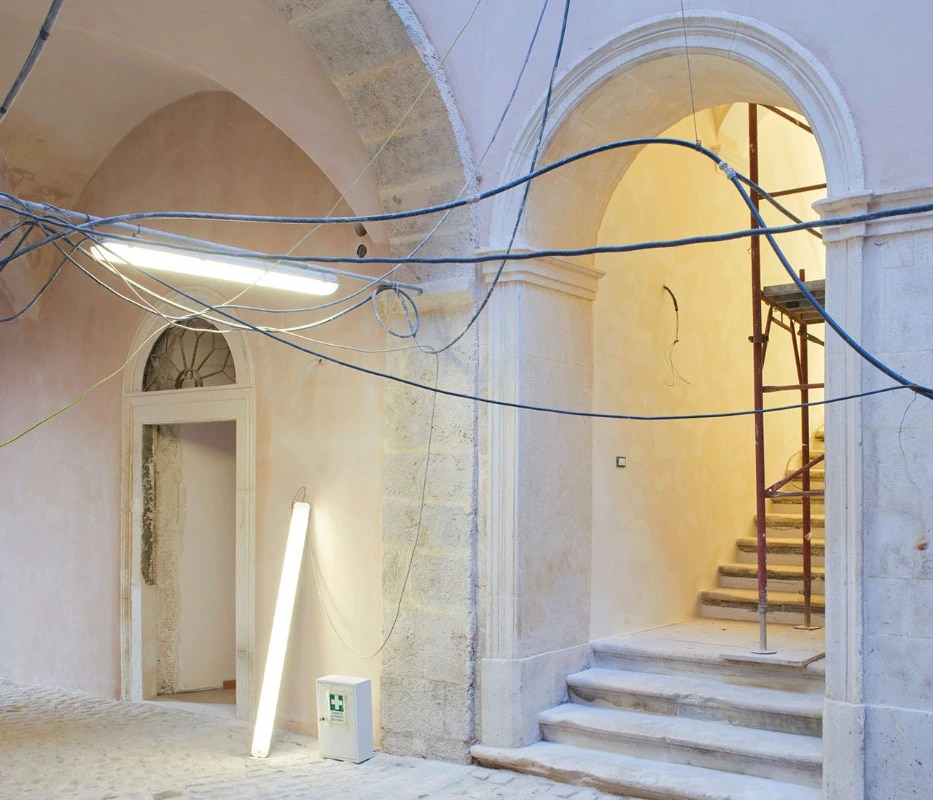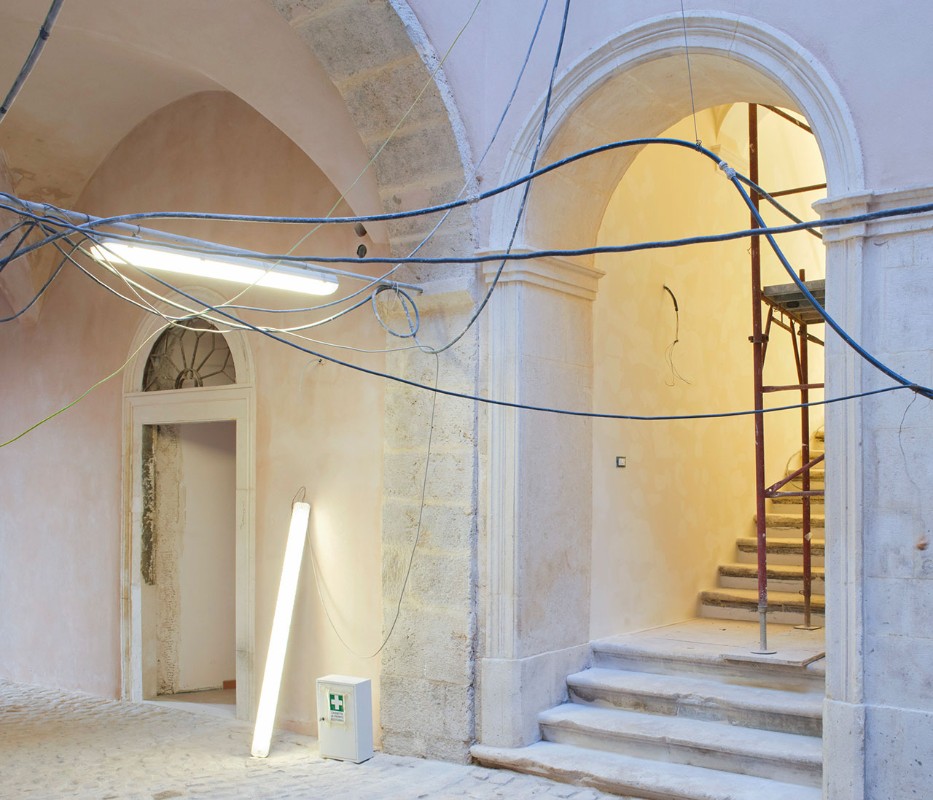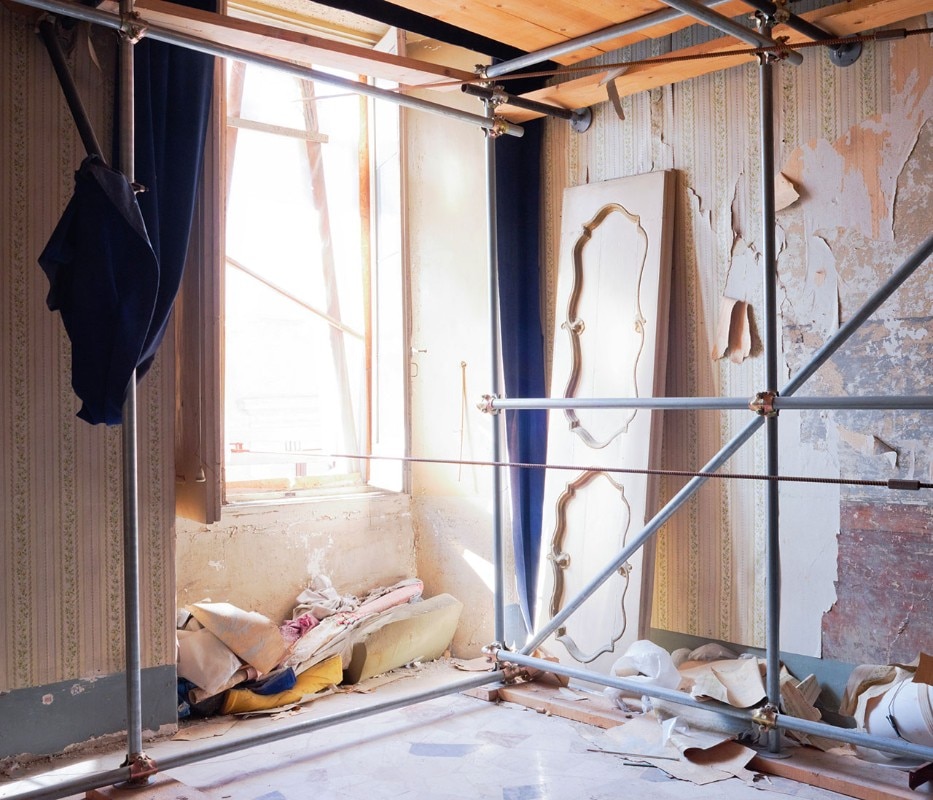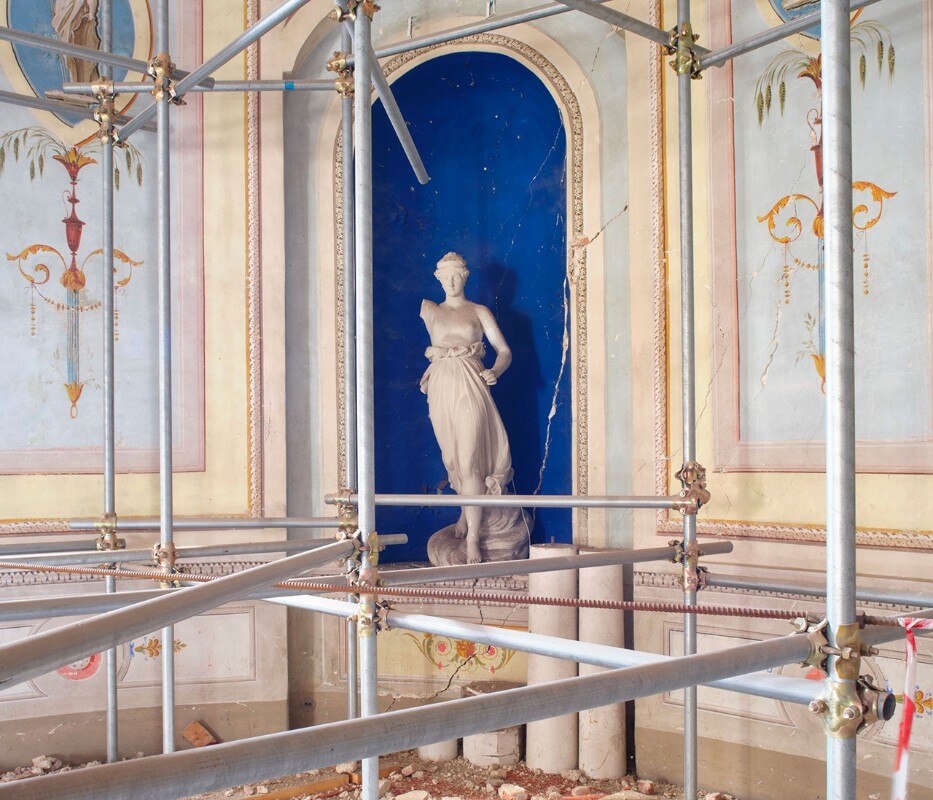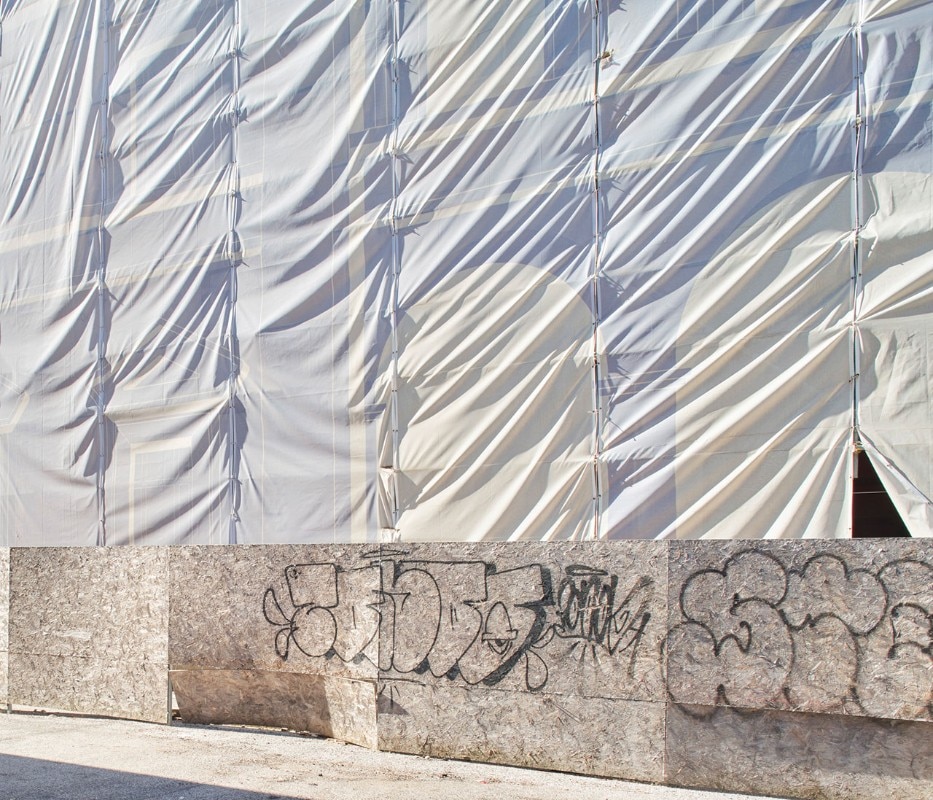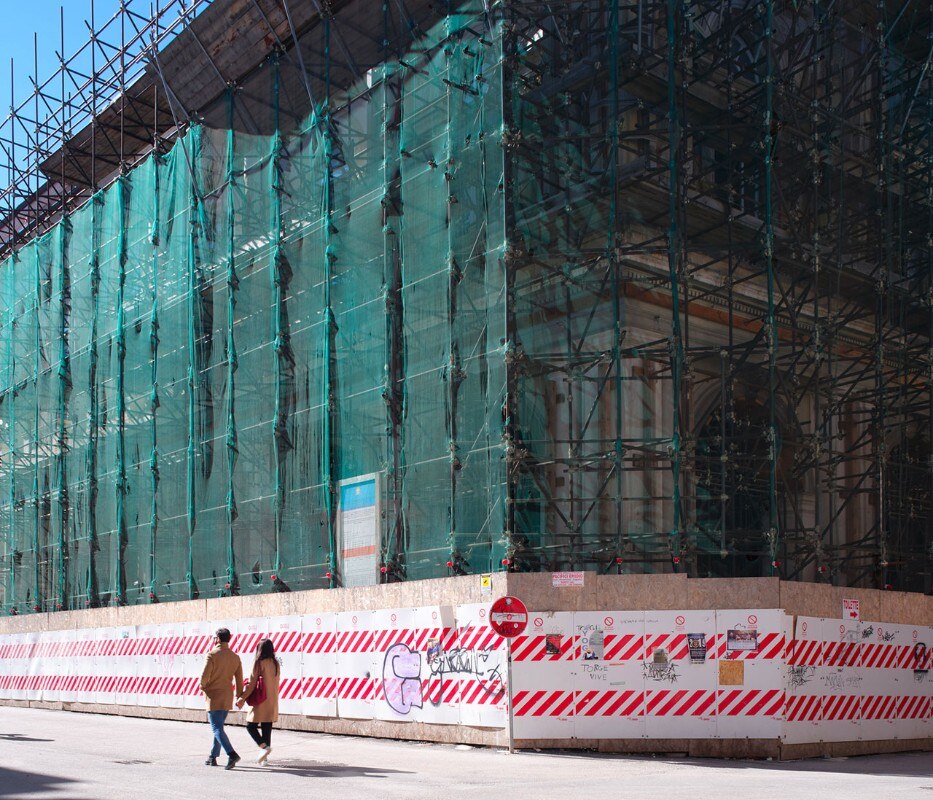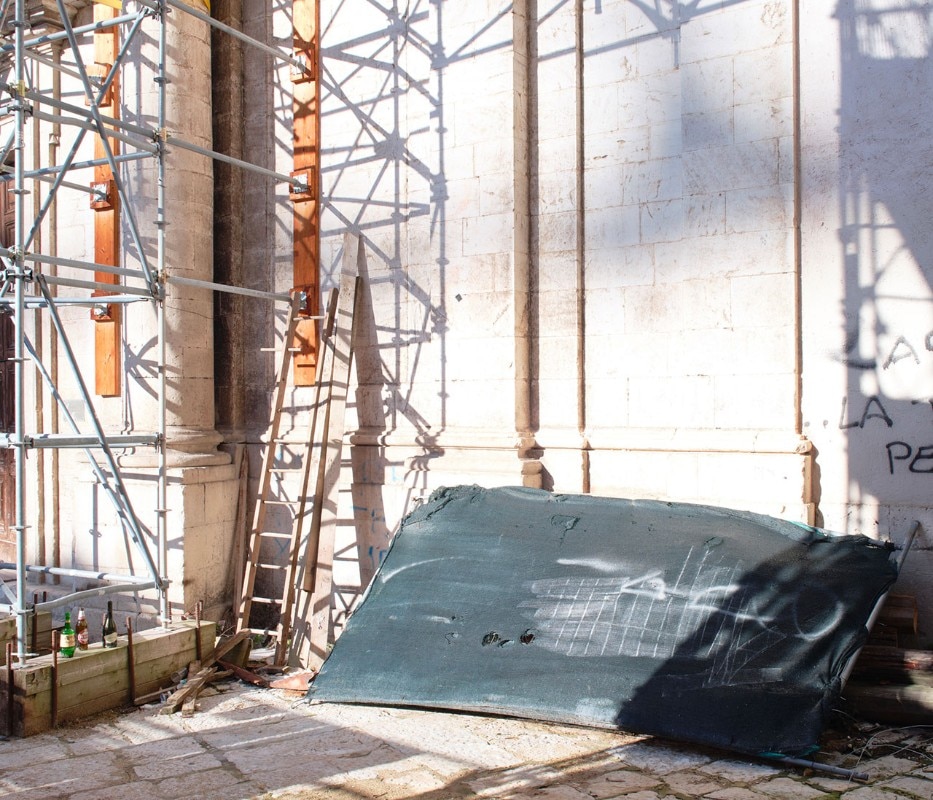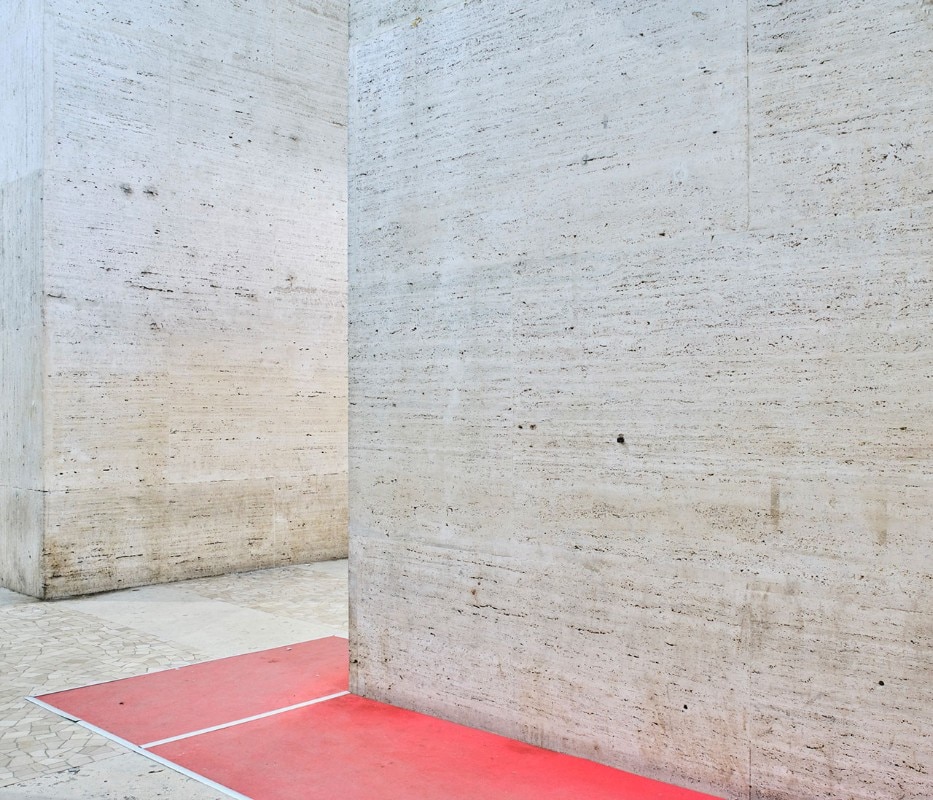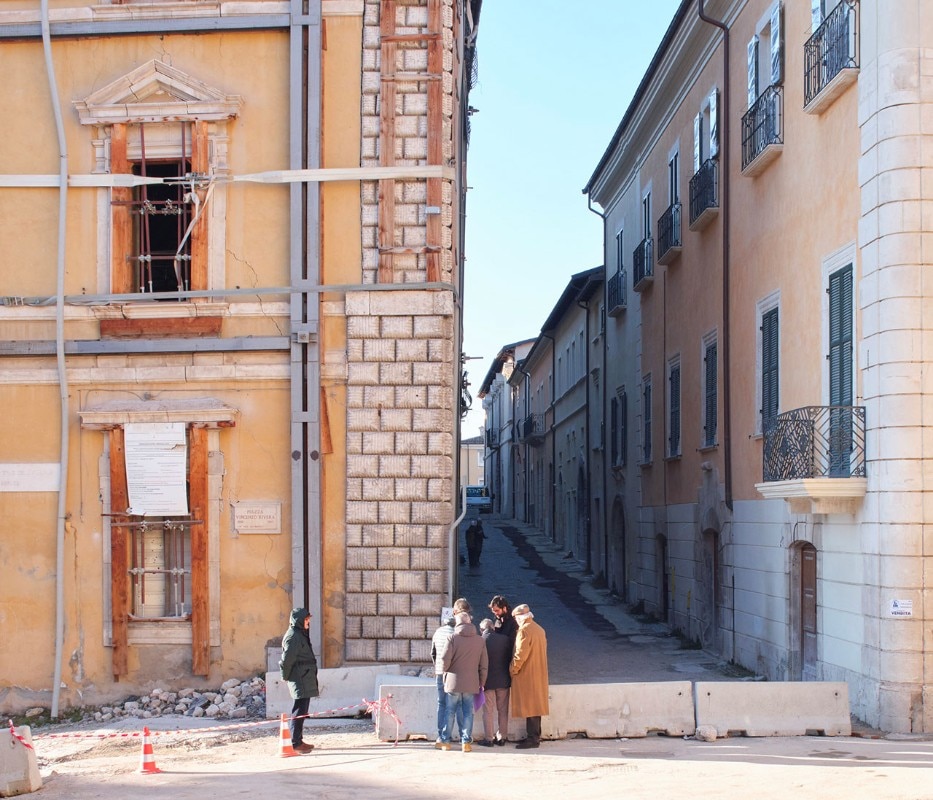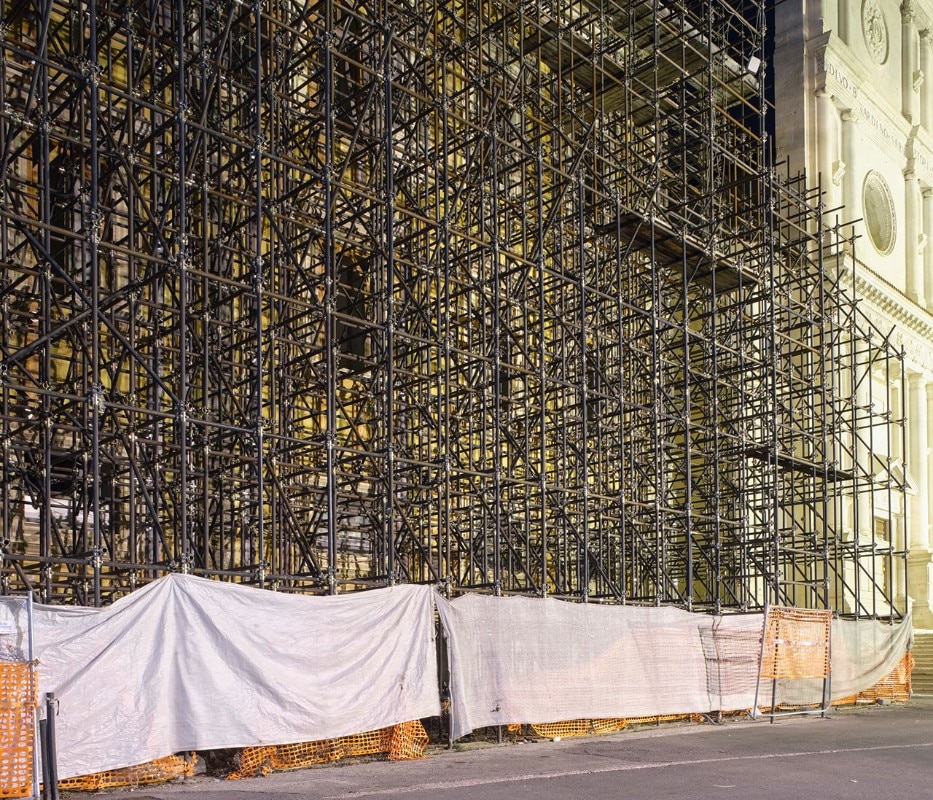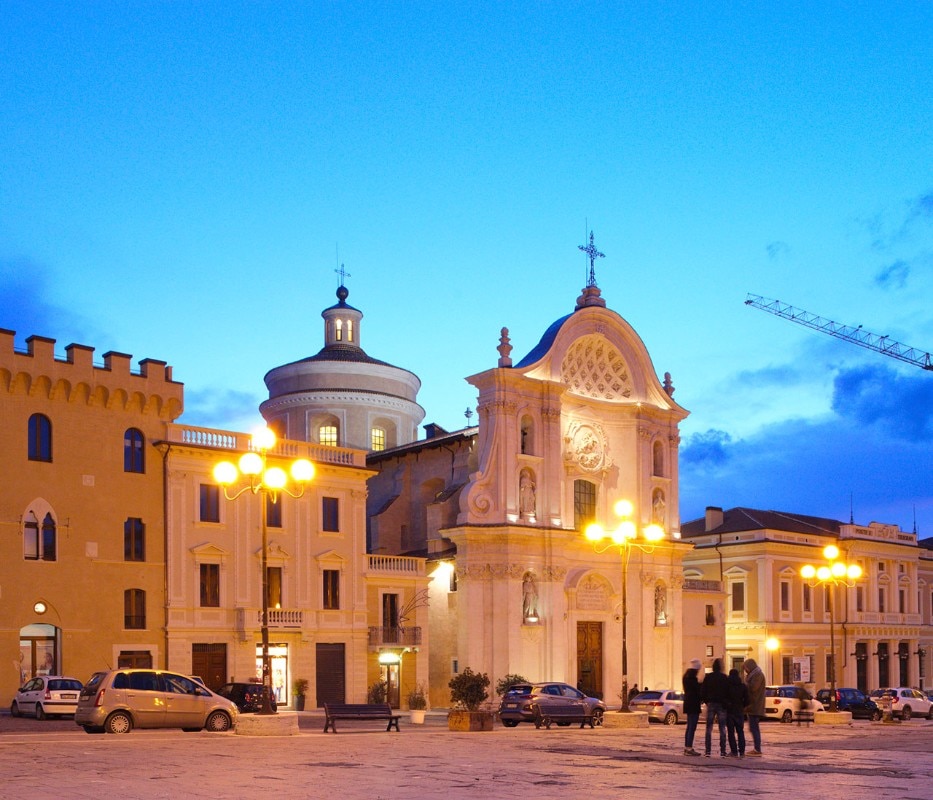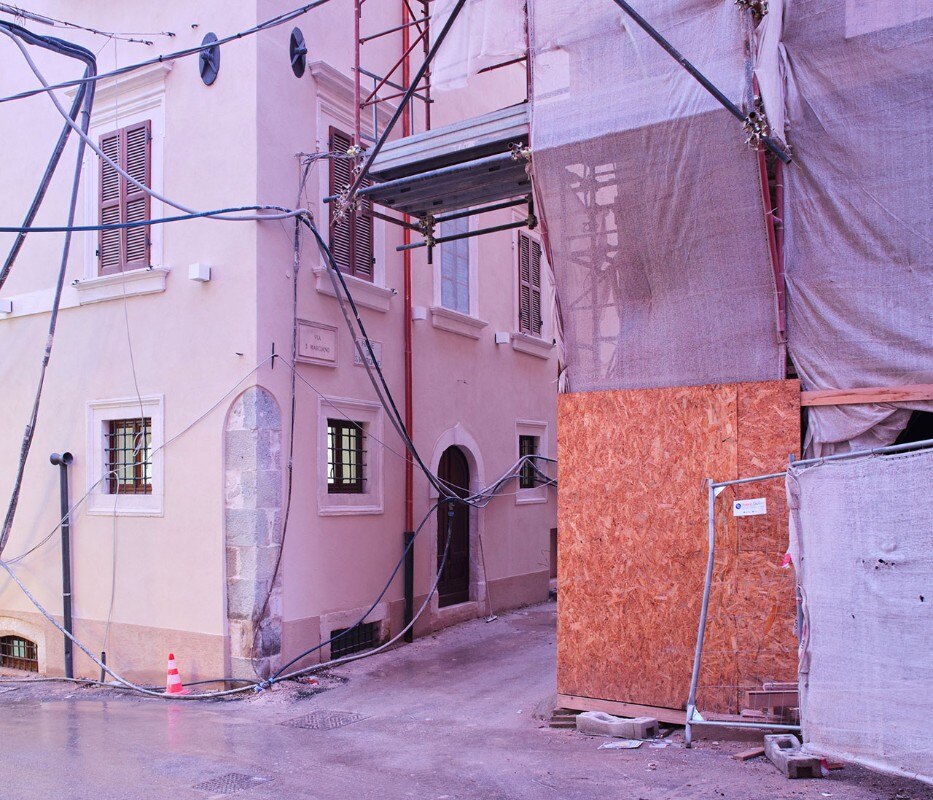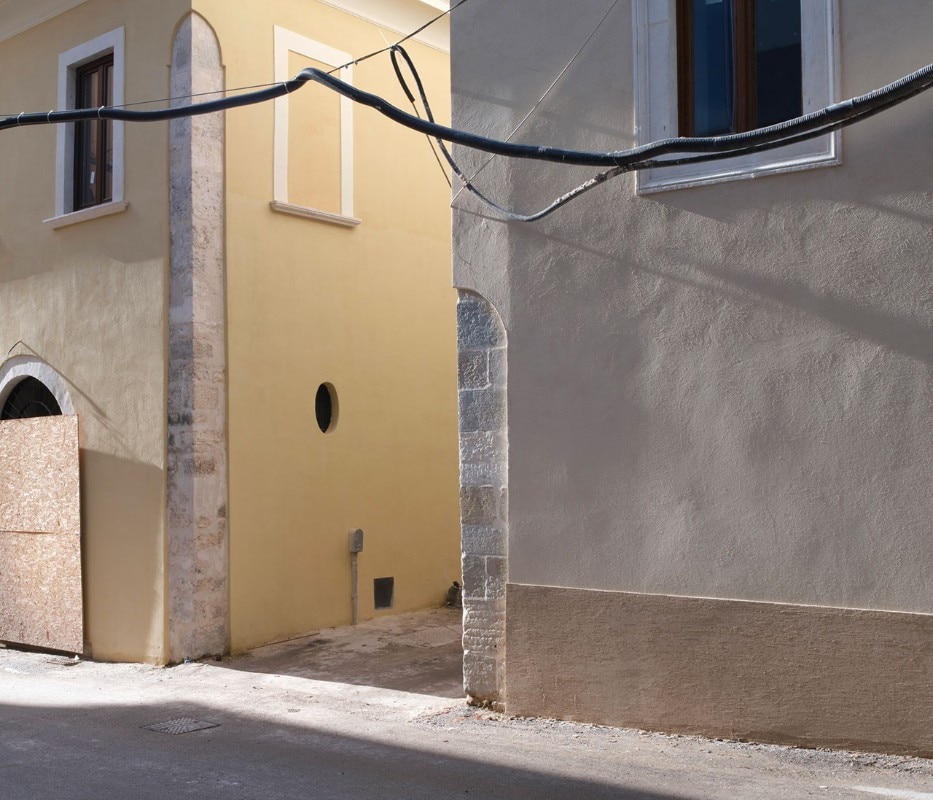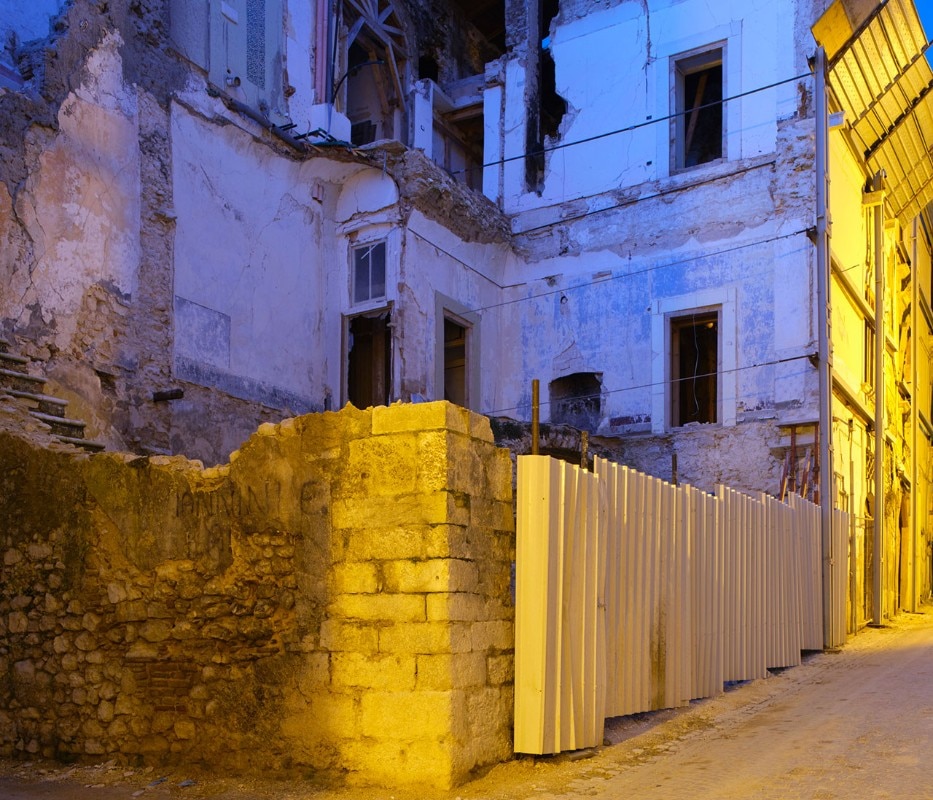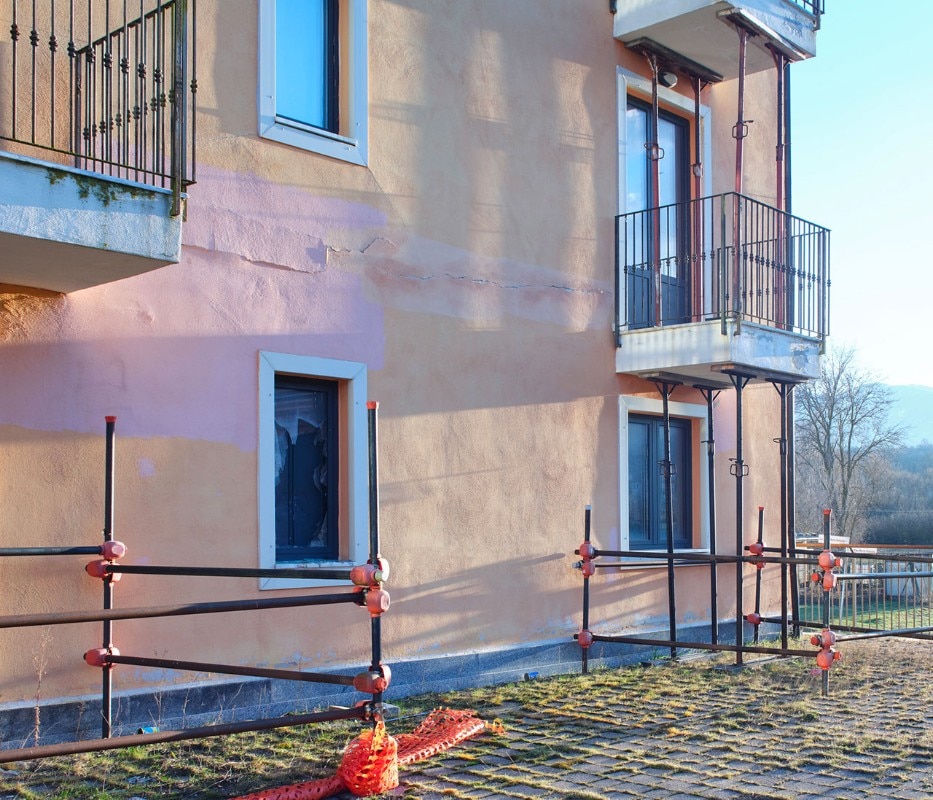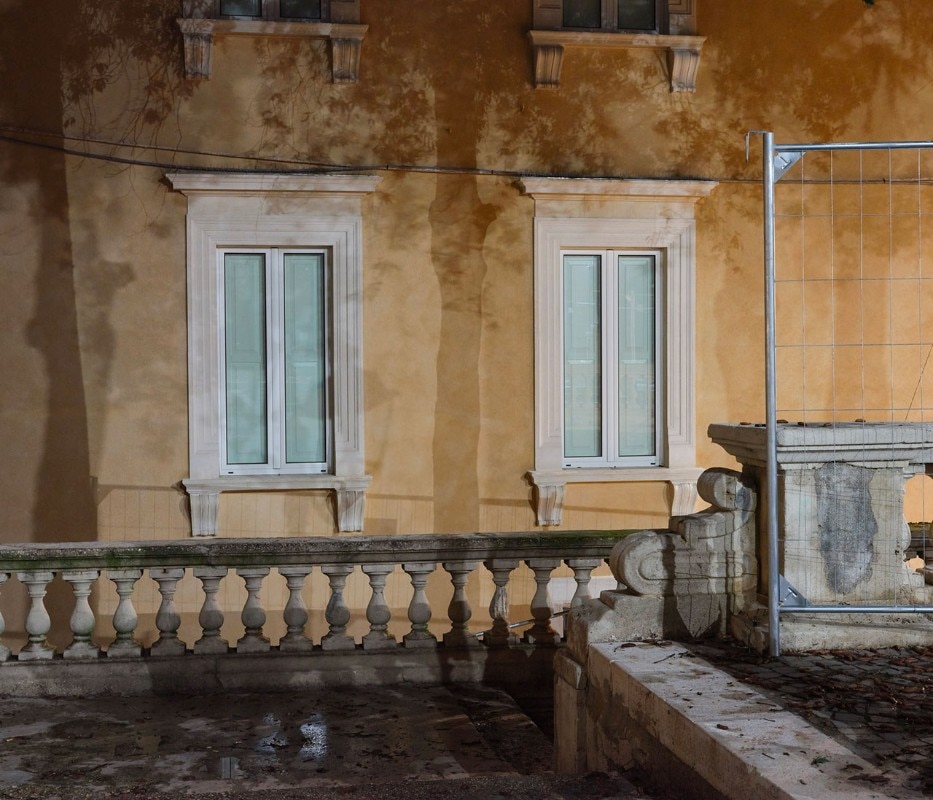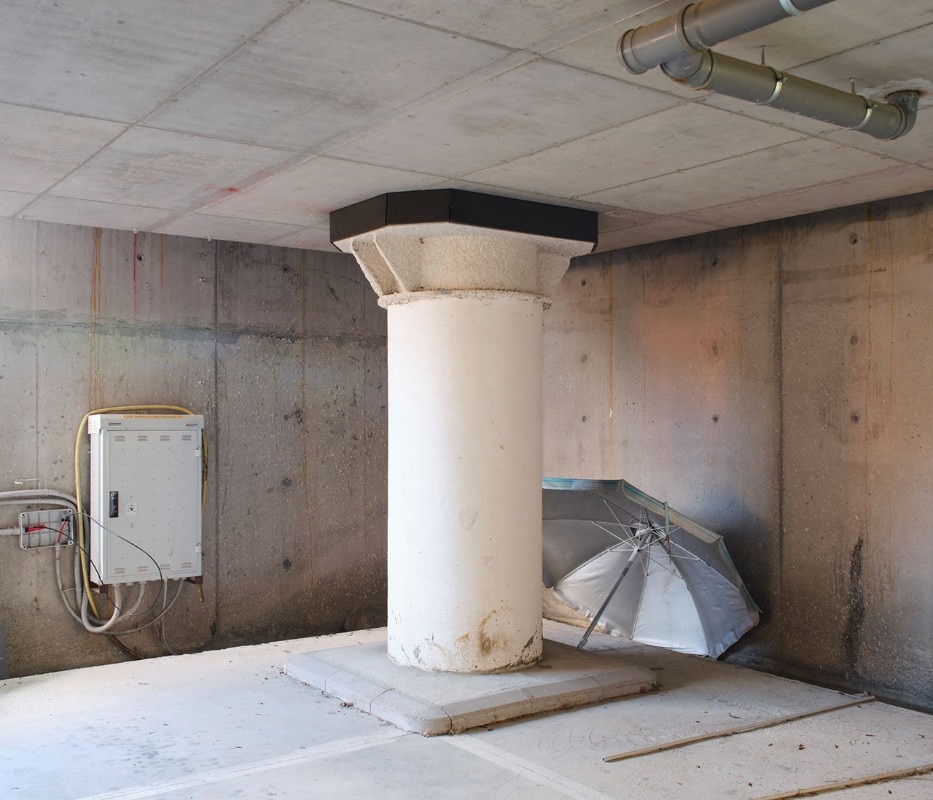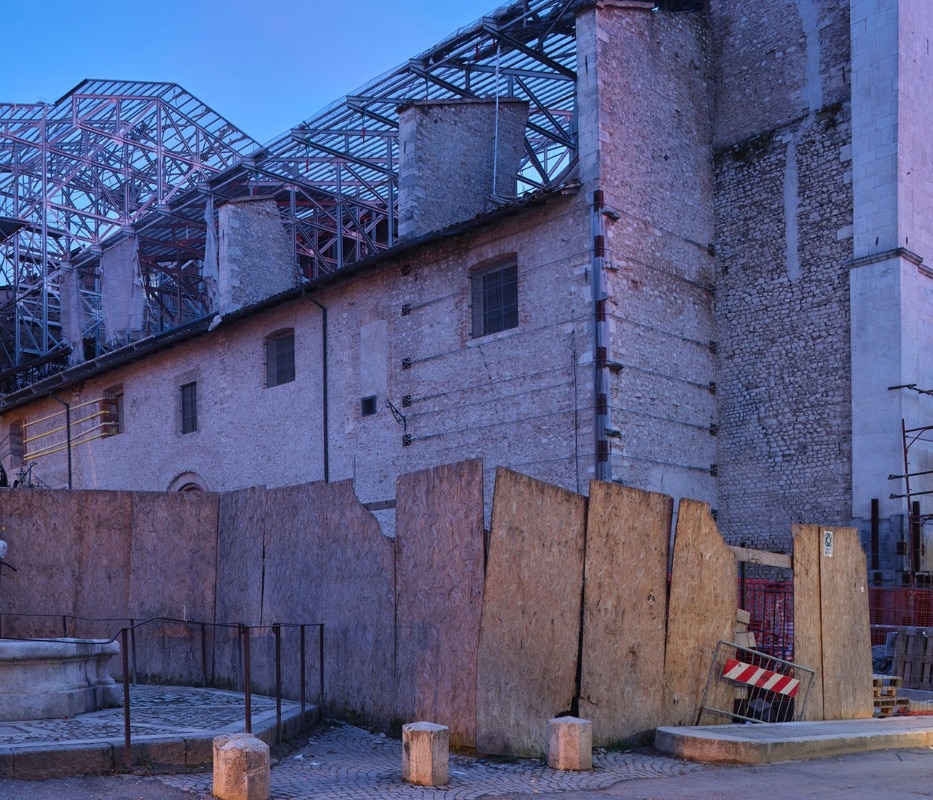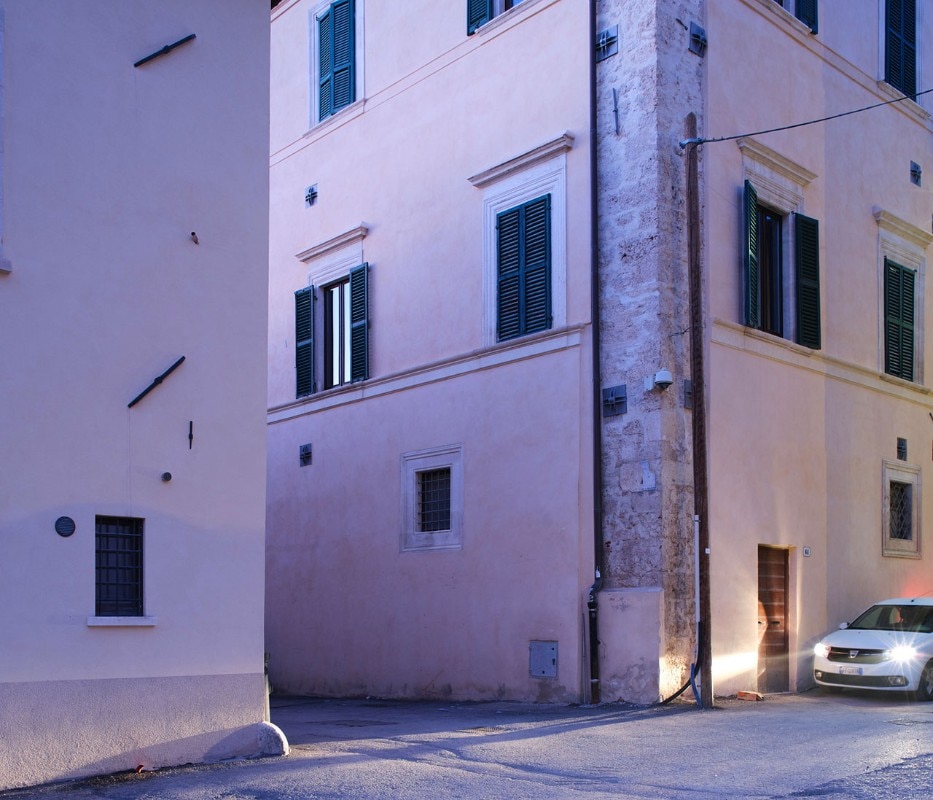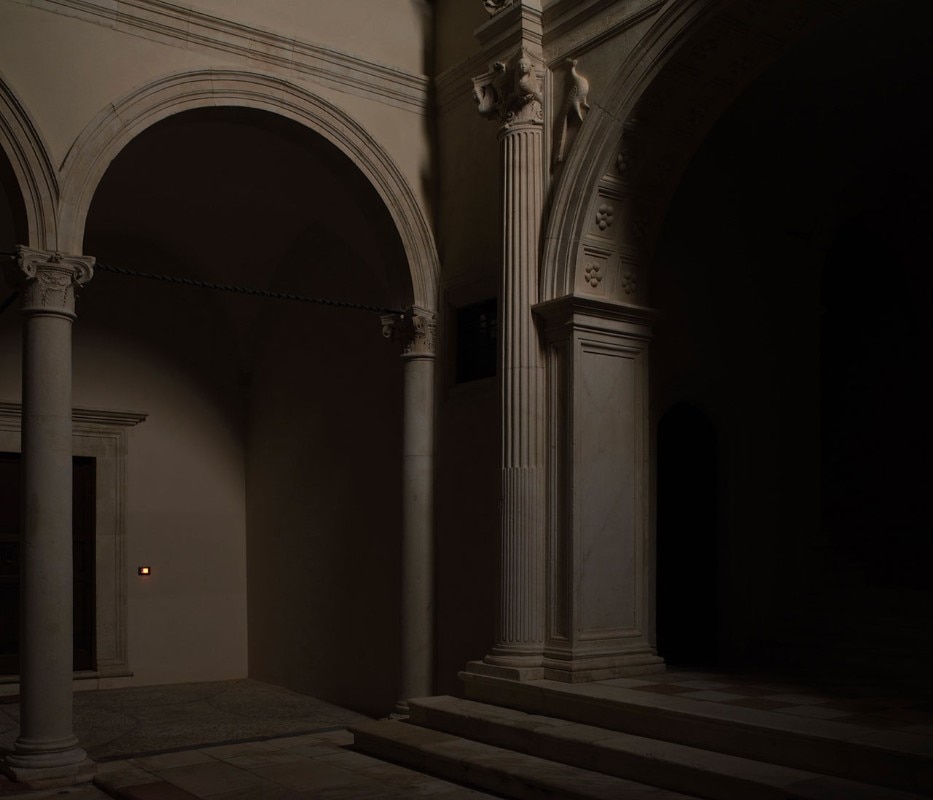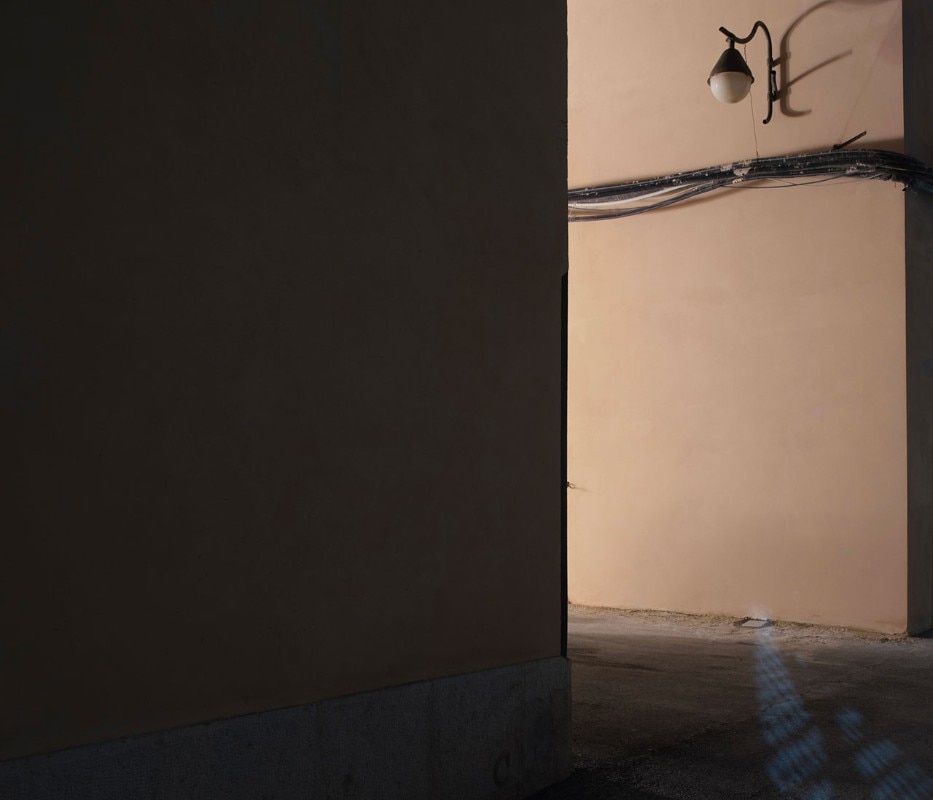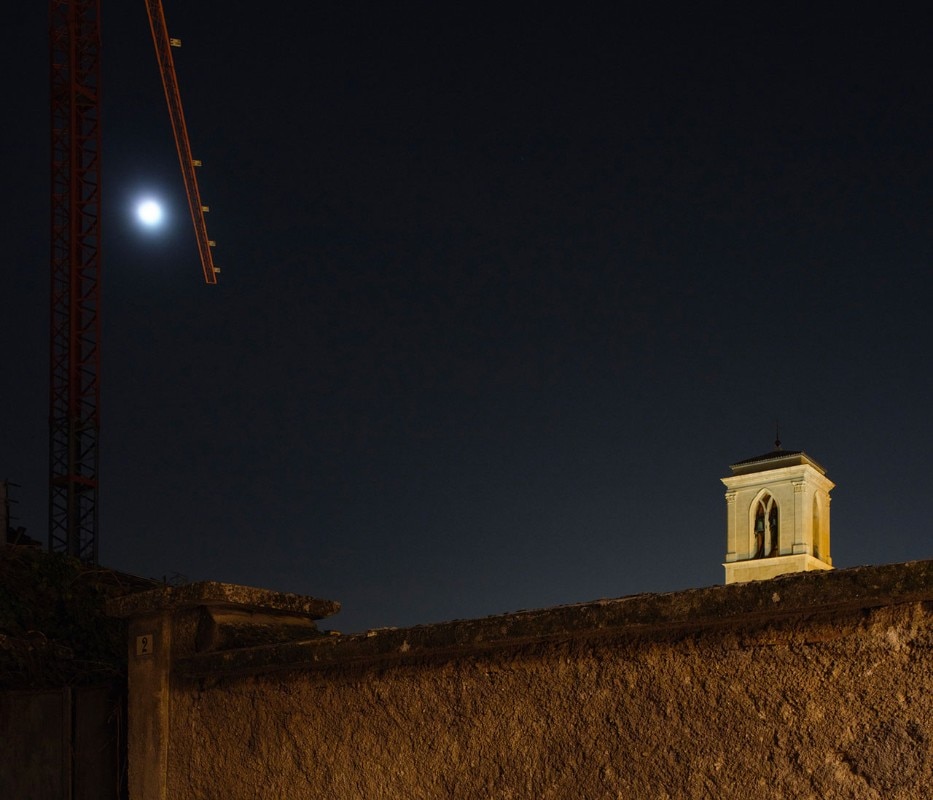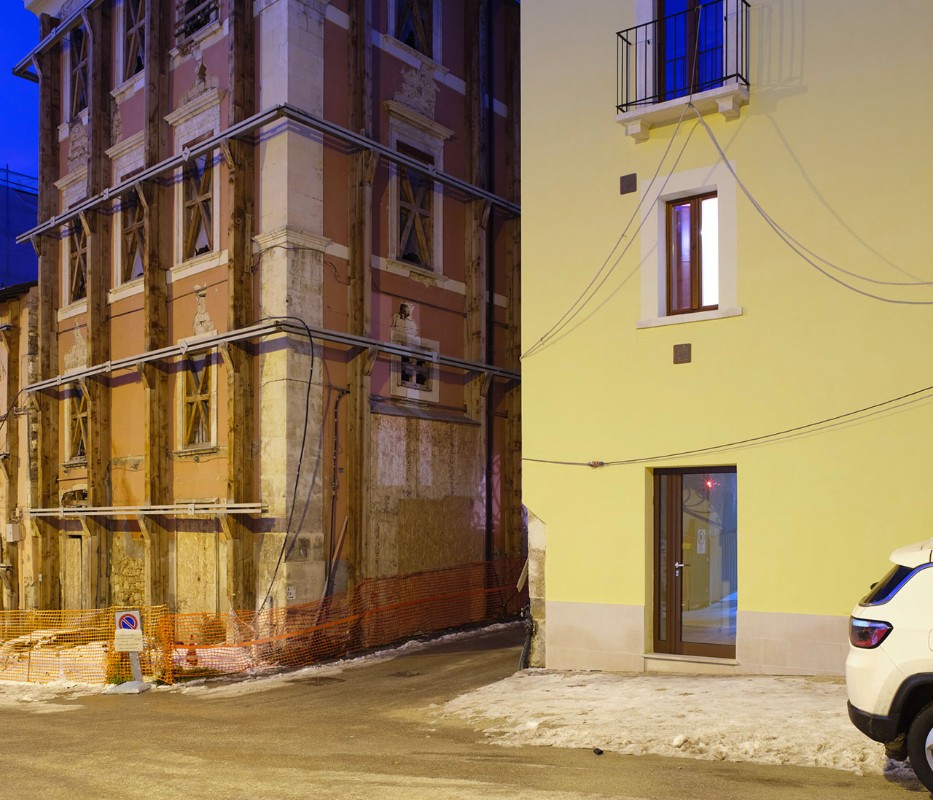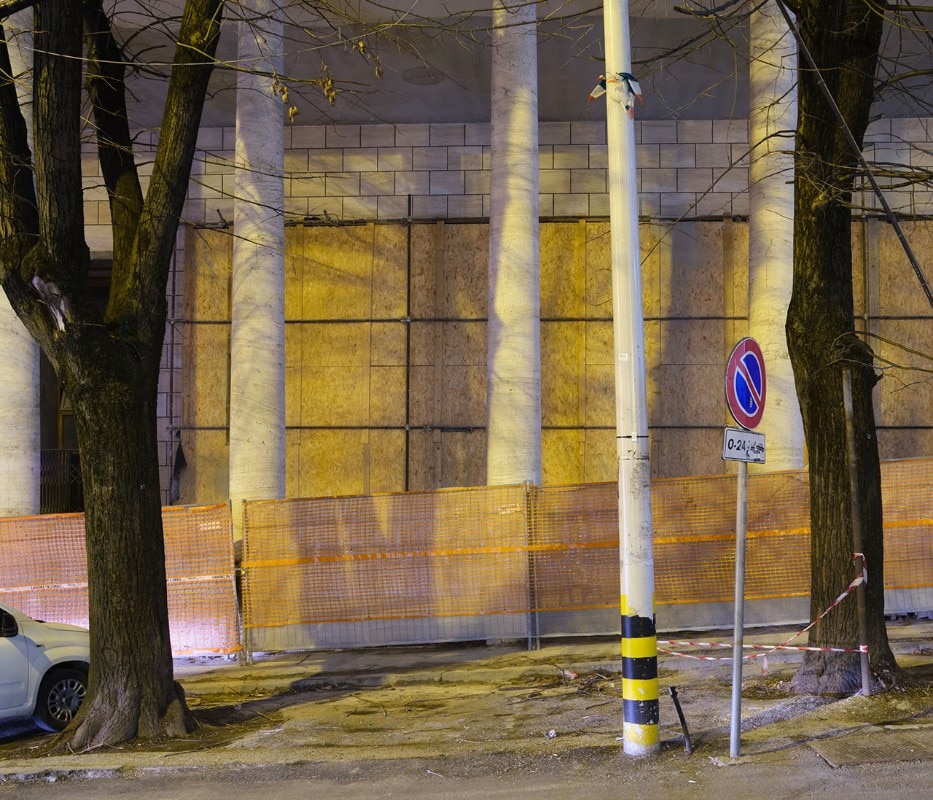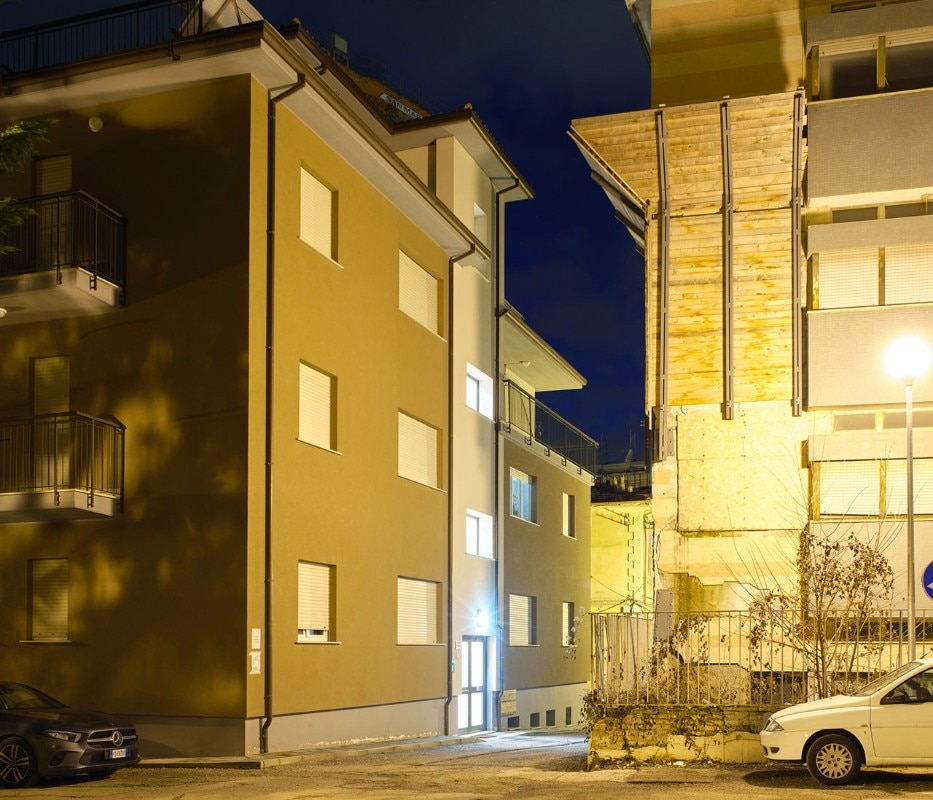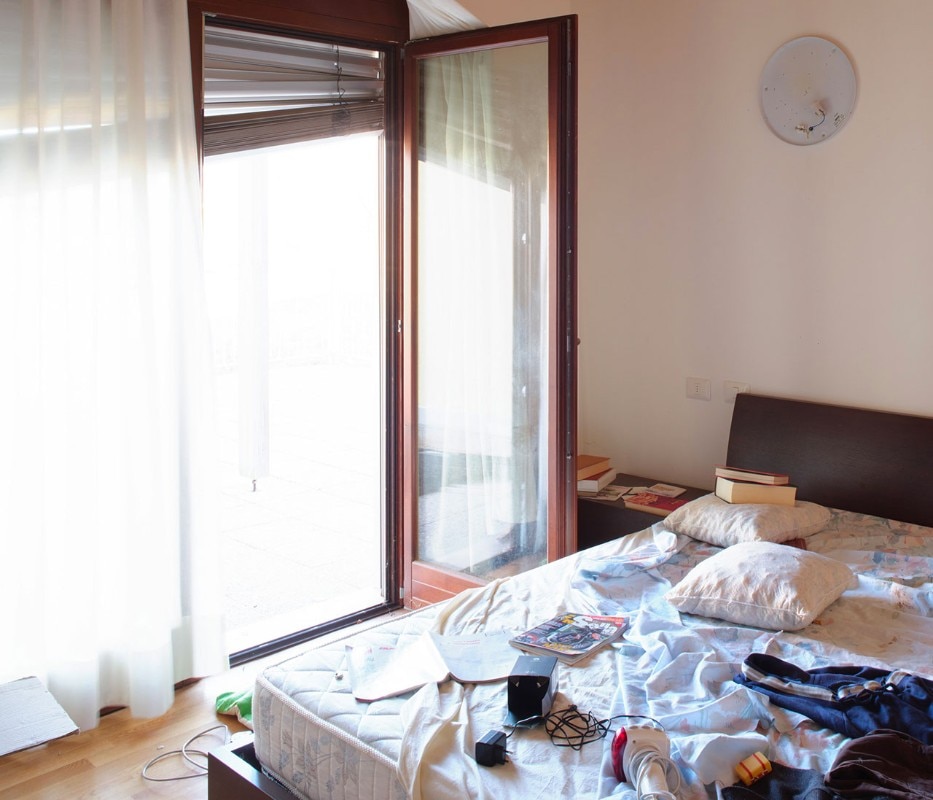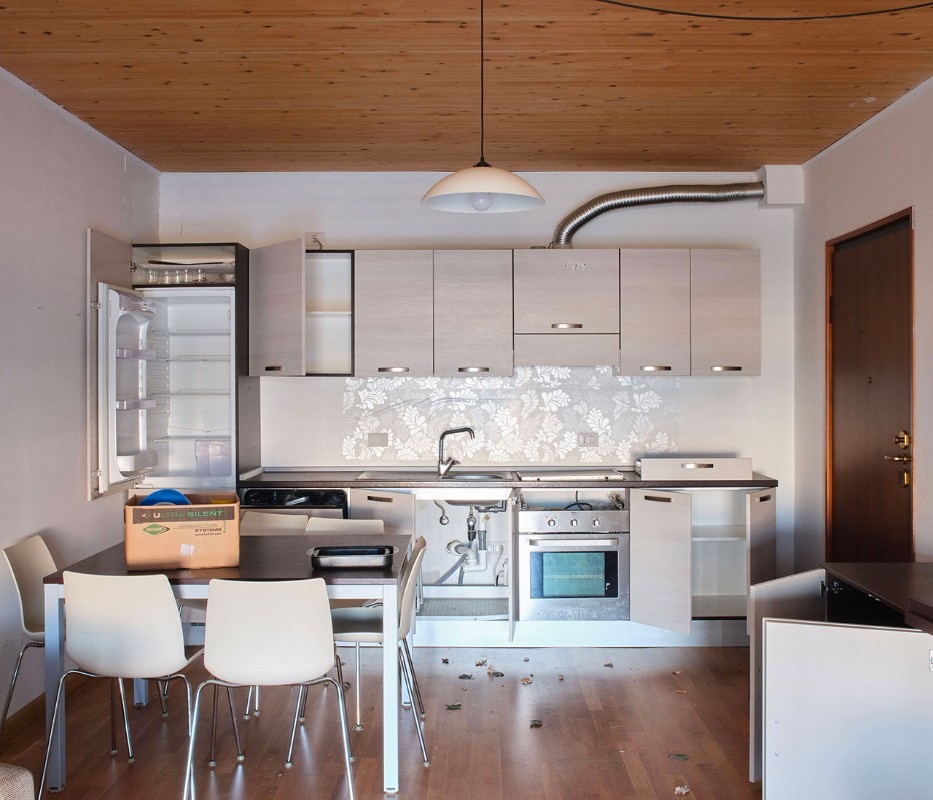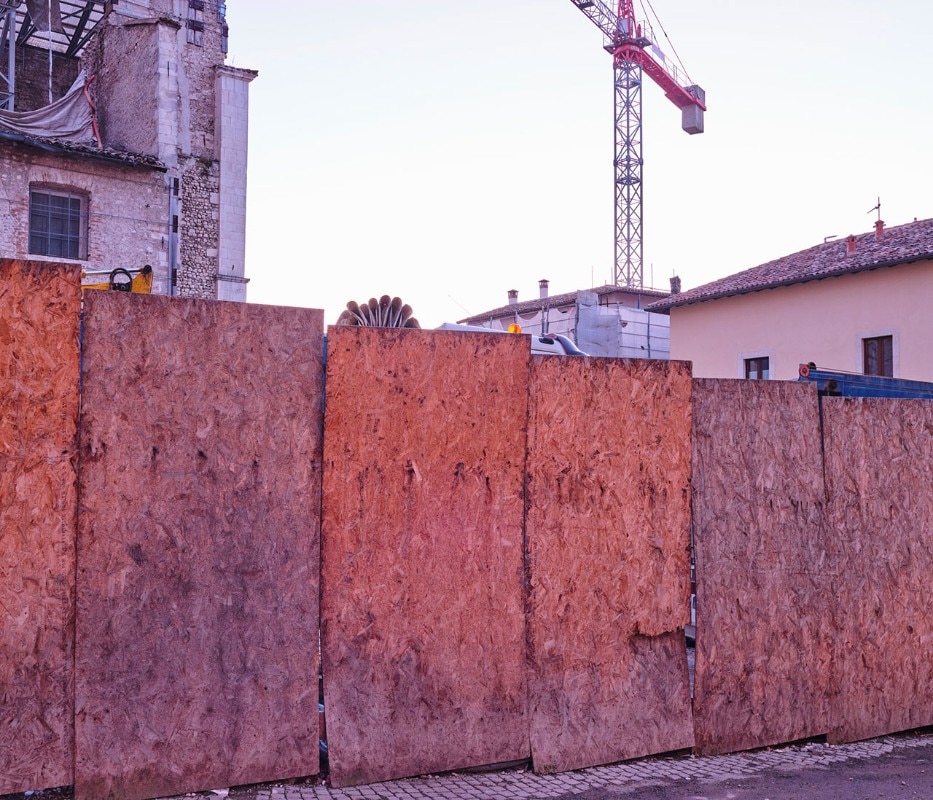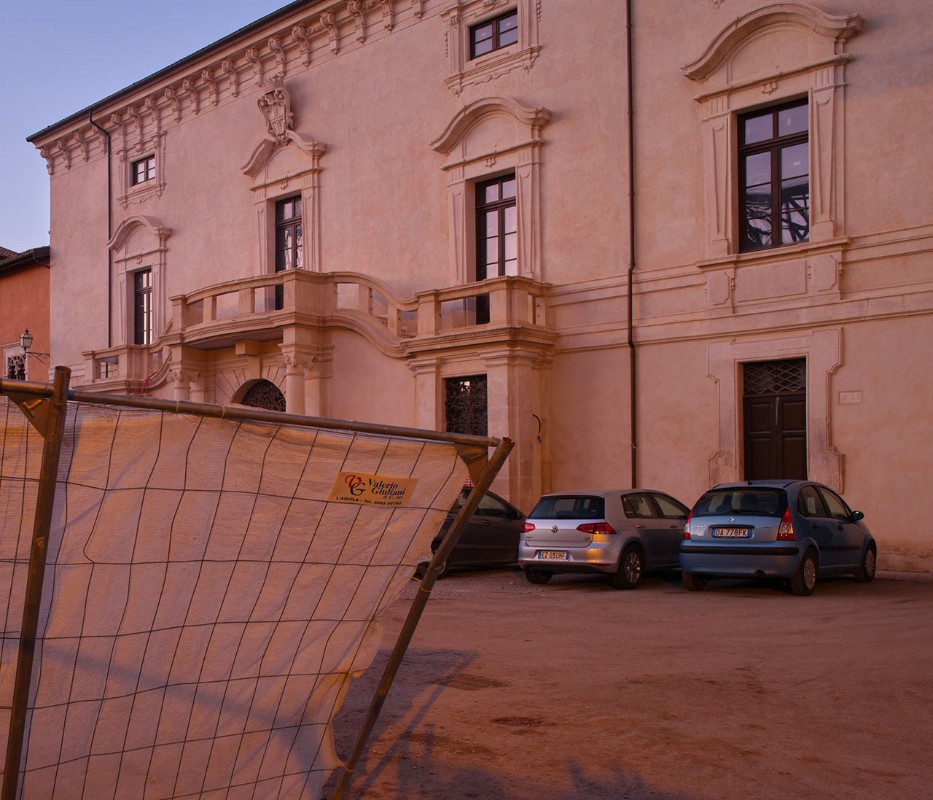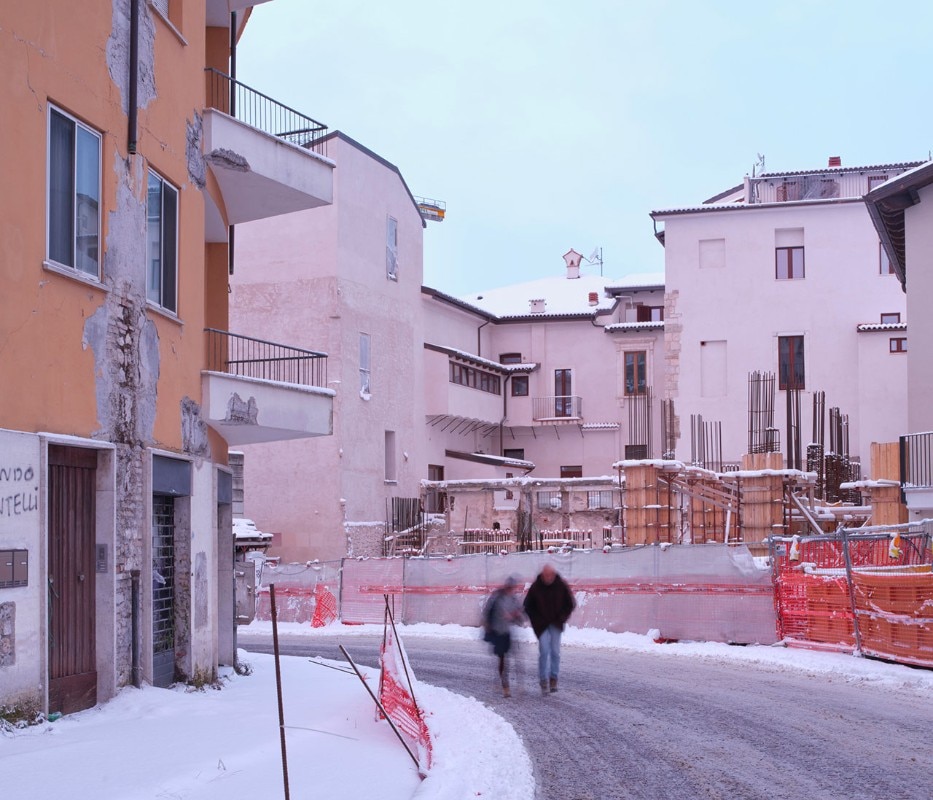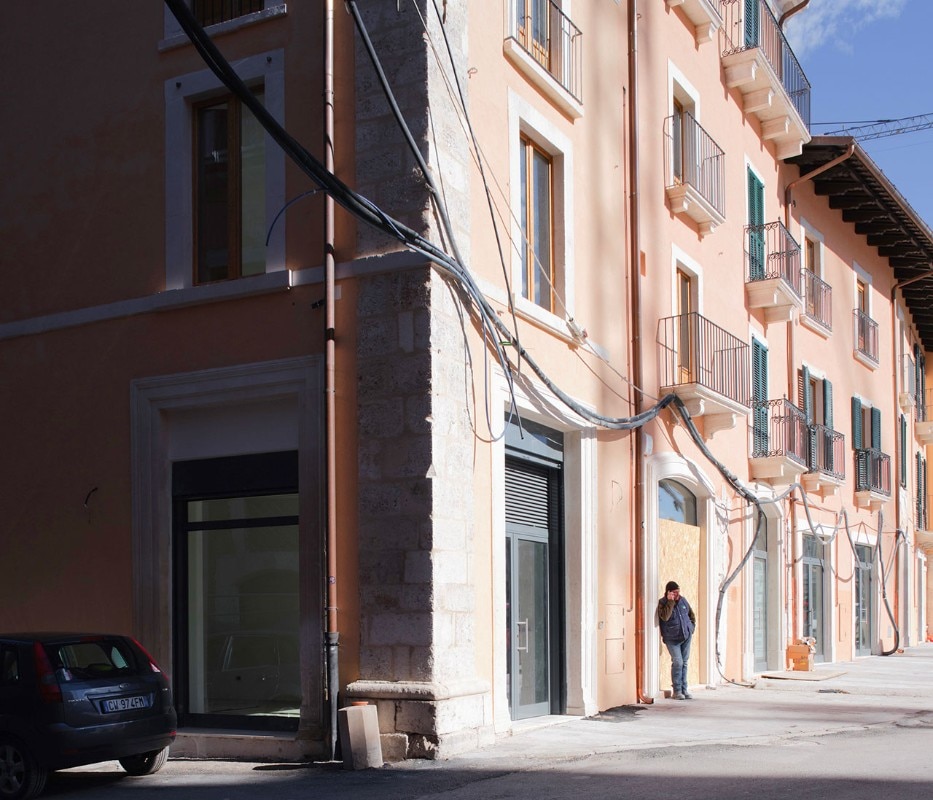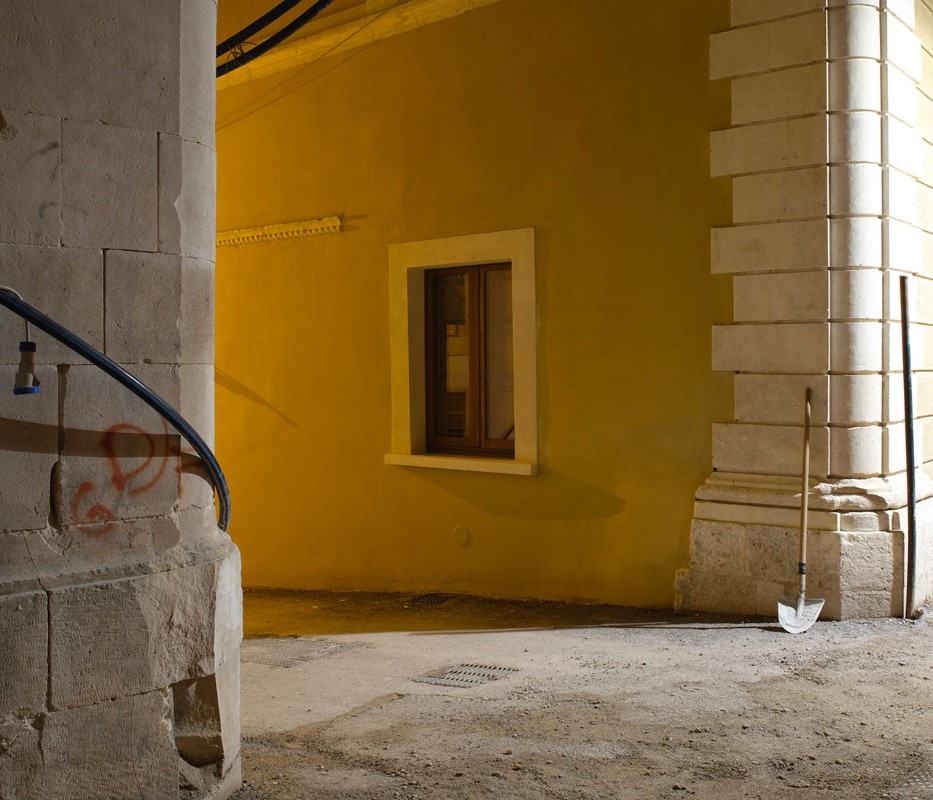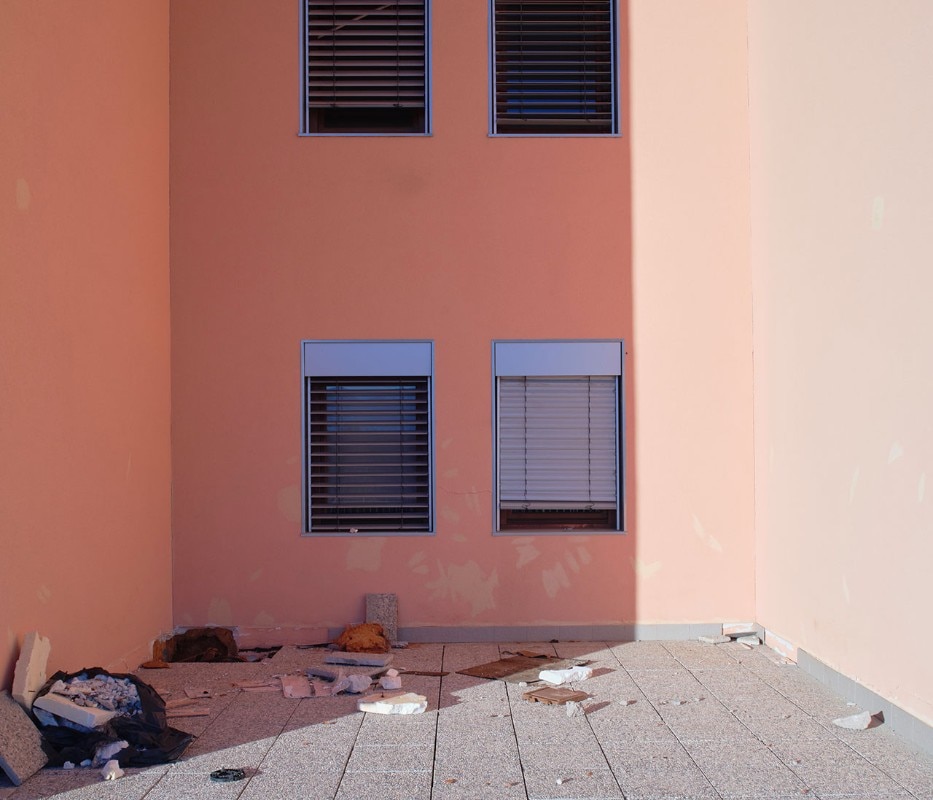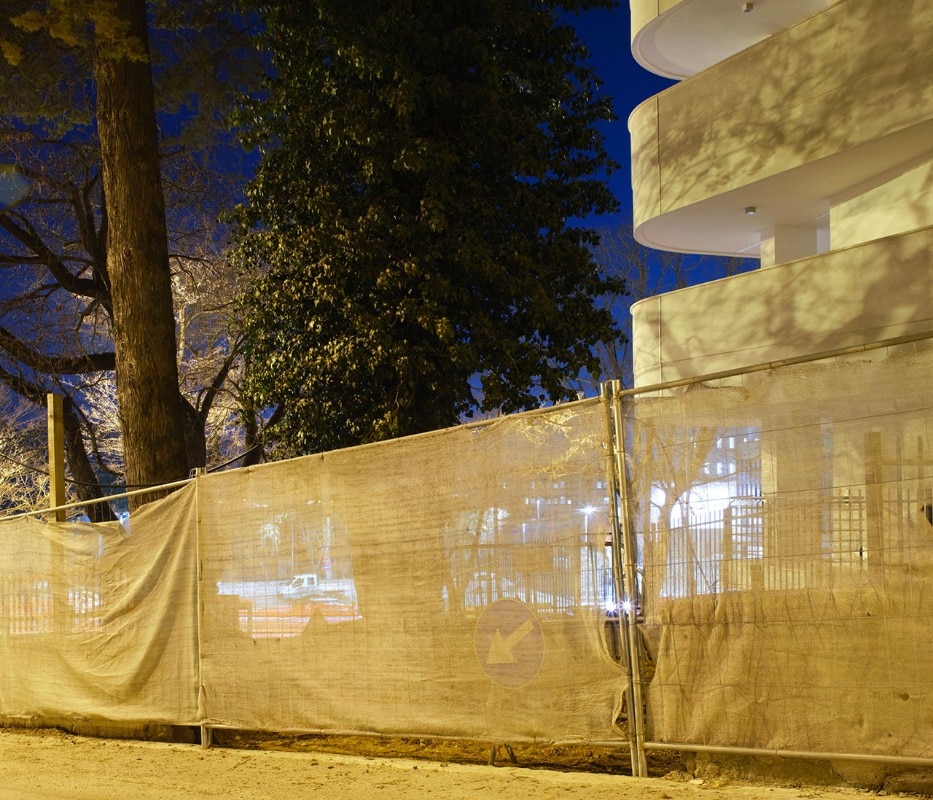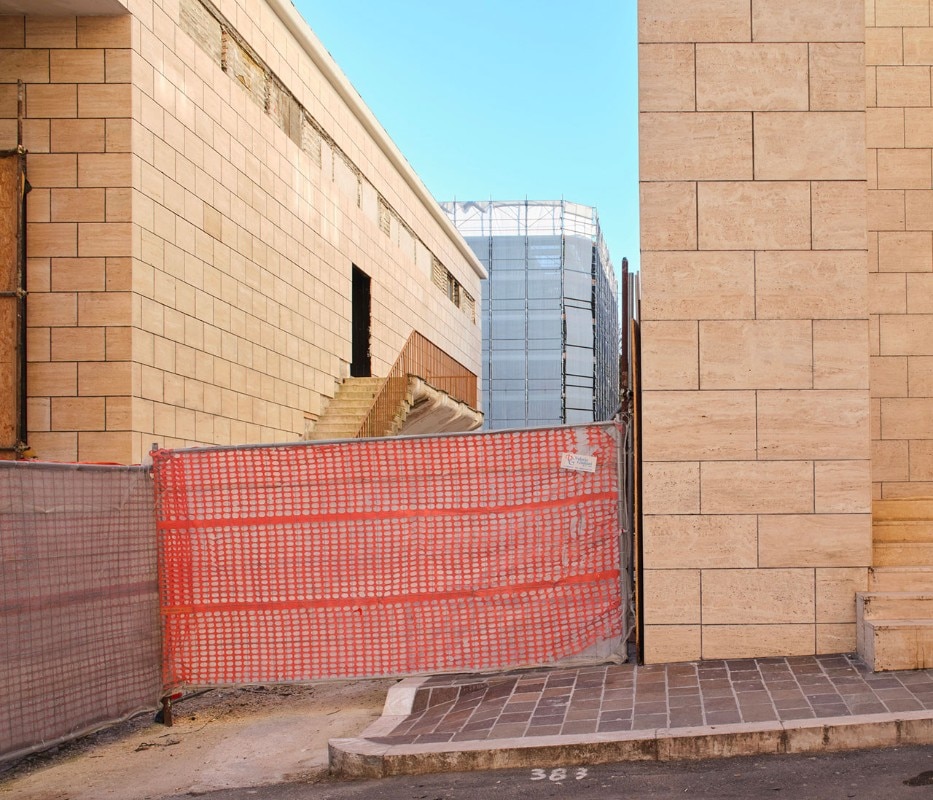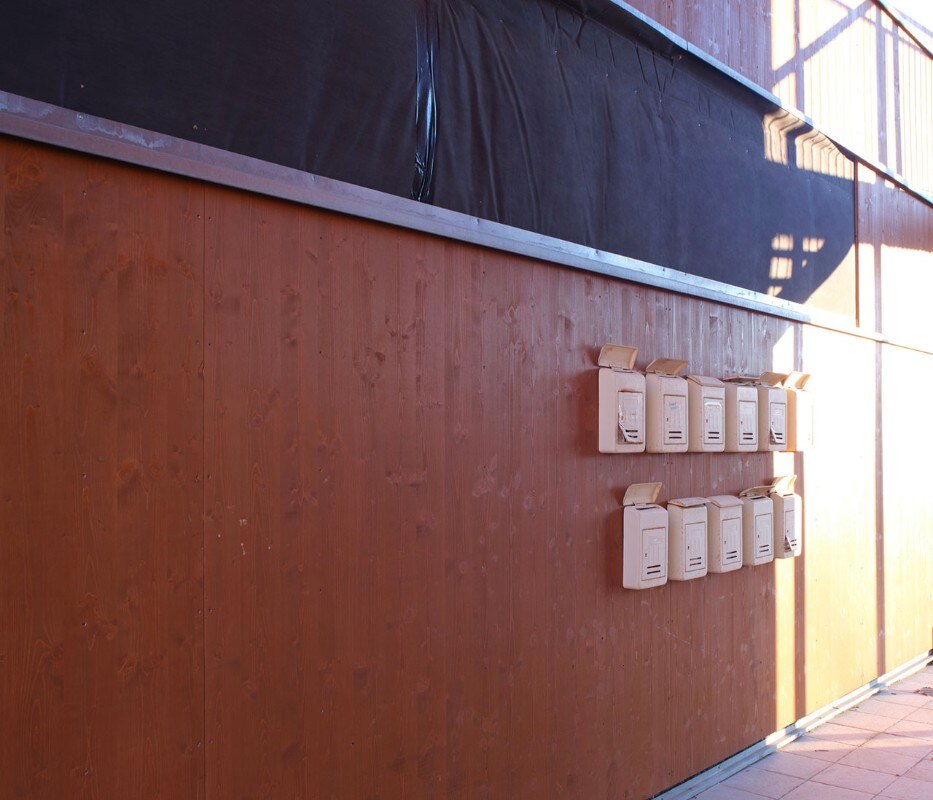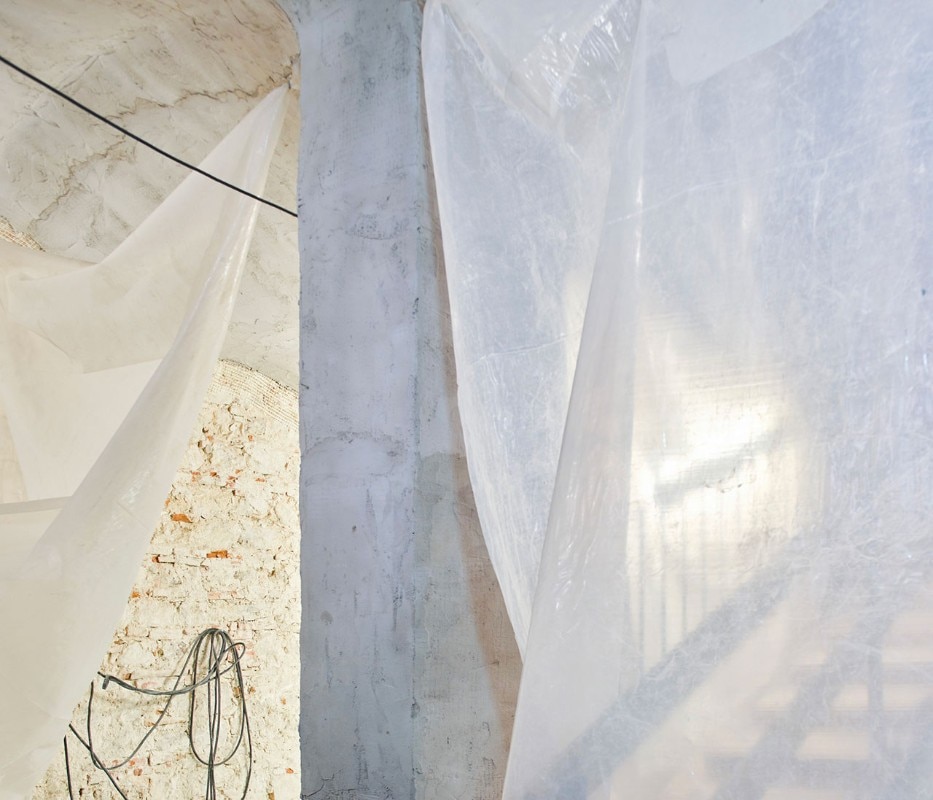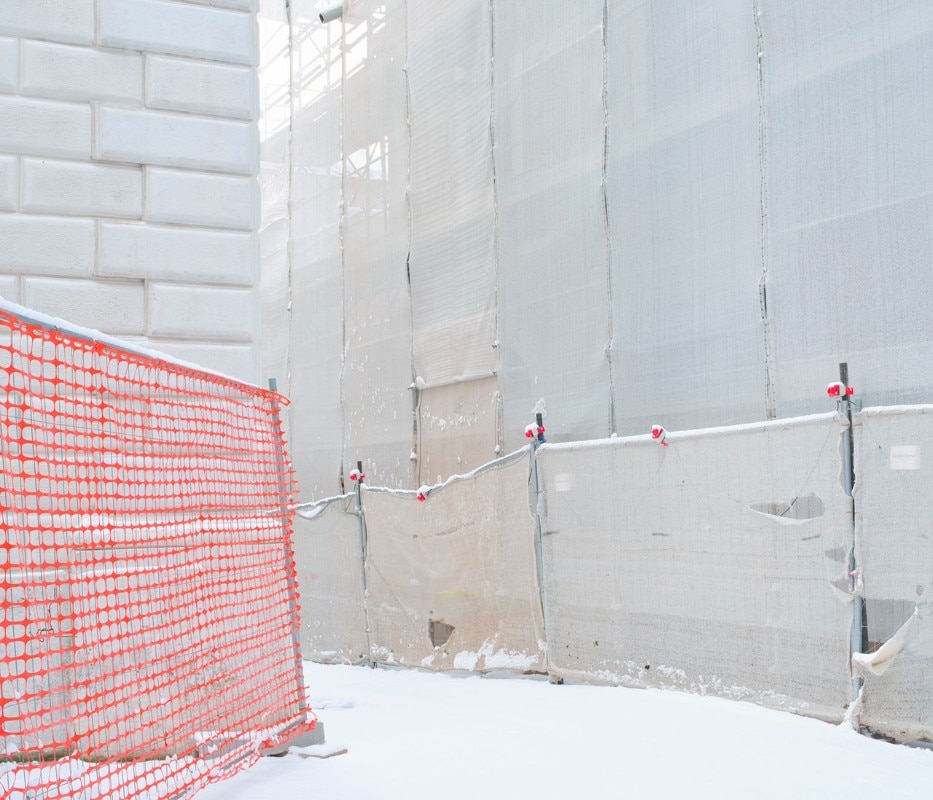L’Aquila today is a complex place undergoing continual changes of form, with modifications to social spaces, and with lights and sounds that have slowly begun to alternate with the noise from the construction sites. Perhaps it will become a whole new town? What would you find if you went for a walk across L’Aquila’s historic centre? It’s difficult to pinpoint the streets and the piazzas, just as it’s often difficult to cross them or enjoy them. The redevelopment of the sites, which for years have been deposit areas for materials and objects, remains far from the idea of the public space. Historic palazzos wrapped in metallic structures alternate with shining facades that need the patina of time.
With an effort of imagination, you can perhaps visualise the end point of the construction projects that have followed one after another intermittently over time in the space. It is the same future-directed effort of imagination that many residents made in 2009 with the completion of the C.a.s.e project – 5,000 flats distributed across 19 different areas between the suburbs and the districts of the town. The settlements are now places attempting to resist time, with all the shortcomings accepted by those who live their day-to-day lives there. L’Aquila is not comprised just of historic centre and C.a.s.e. project. There are the suburban areas that are once again inhabitable, the 59 town districts with the red zones and the temporary accommodation, and a vast area that ever more needs to be able to imagine the future without losing its memory of the past.
Antonio Di Cecco was born in 1978 in L’Aquila, where he lives and works. A graduate in Building and Architectural Engineering with a specialism in Architectural Composition, he works in the photography of architecture and the urban landscape. His work concentrates on the analysis of processes by which places are changed, and on the relationship between humans and their landscape, with a specific interest in mountain regions. He is the founder of Contrasti Urbani, and his work has been shown in Italy and abroad and in solo and group exhibitions.


